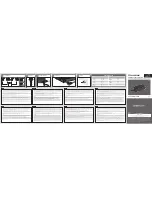
Instructions for Use
– SCHMIDT
®
Flow Sensor SS 20.500
Page 14
Direct mounting in a wall with housing thread
In this case, the enclosure thread is screwed into a thread (G½) cut directly
into the wall (see Figure 3-2).
This method is suitable for high-pressure applications provided the re-
quired measures have been taken.
For measurements in media with overpressure switch system to
depressurized state, seal the thread (e.g. with tape made of
PTFE) and secure sensor against discarding.
Depending on whether the enclosed fastening nut can be used for locking
or not, the rotation position can be adjusted:
Installation without lock nut:
Carefully insert measuring probe with attached protective cap
12
into
the bore so that the mounting block of the enclosure is in contact with
the wall.
Screw in enclosure thread so that the mounting block is in contact with
the wall.
Tighten using the wrench (HEX30) on the mounting block by hand.
Finally remove protective cap
10
.
The wall must be so thick that the enclosure thread does not protrude on
side of the medium to avoid turbulences. The immersion length is deter-
mined by sensor length, the rotation position of the sensor cannot be cor-
rected (see Figure 3-2).
Installation with a lock nut:
Screw enclosed fastening nut as far as possible into the enclosure
thread.
Carefully insert measuring probe with attached protective cap into the
bore hole and screw in the enclosure thread as far as required (min.
3 turns).
Turn the sensor enclosure into the required position, hold up at the
mounting block by means of the wrench (HEX30) and lock nut.
Finally, remove protective cap.
The immersion depth is determined by probe length except for a few mil-
limeters of locking tolerance, rotation position of the sensor is adjustable.
12
If the protective cap can be removed on the side of the medium; otherwise, remove be-
fore installation.
!















































